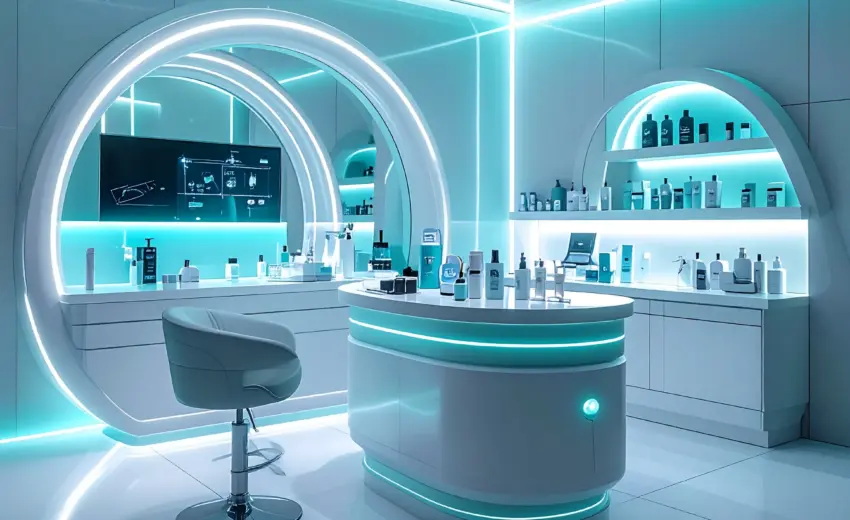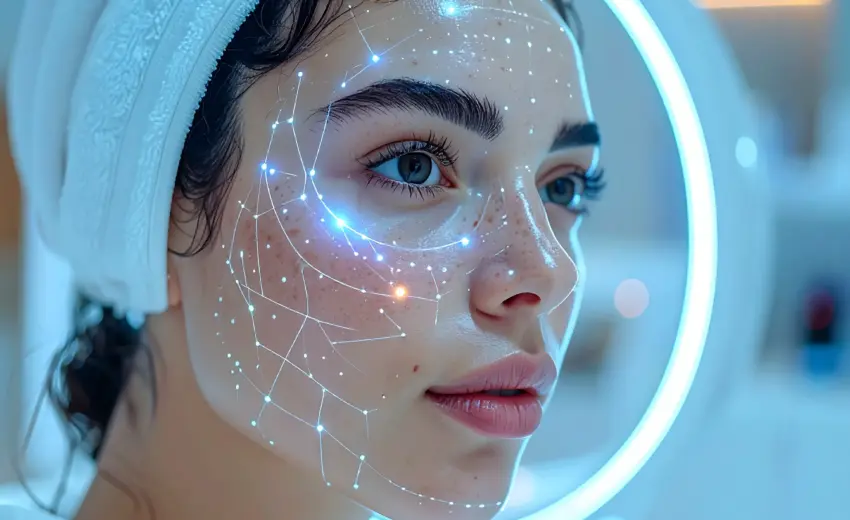Beauty AI is transforming the beauty industry at an unprecedented pace, with projections showing it could add $9 billion to $10 billion to the global economy. We’re witnessing a sector already valued at $68.9 billion in 2024 that’s expected to reach nearly $80 billion by the end of 2025.
Behind this explosive growth, however, lies a world of AI applications that many professional makeup artists aren’t openly discussing. While they showcase their talents on social media, many are quietly leveraging AI tools to perfect their techniques and test concepts. In fact, these technologies are revolutionizing beauty industry trends in ways most consumers don’t realize.
As we look toward 2025, the integration of beauty and tech is reaching a critical inflection point. Hyperpersonalized targeting could improve conversion rates by up to 40 percent, while 77% of beauty professionals believe conversational AI agents offer unmatched potential for creating tailored interactions. Furthermore, with 67% of Gen Z prioritizing sustainability, AI is becoming essential for developing the natural and organic products this demographic demands.
In this article, we’ll pull back the curtain on what expert makeup artists won’t tell you about beauty AI in 2025, exploring both its transformative potential and the realities that brands and consumers should understand.
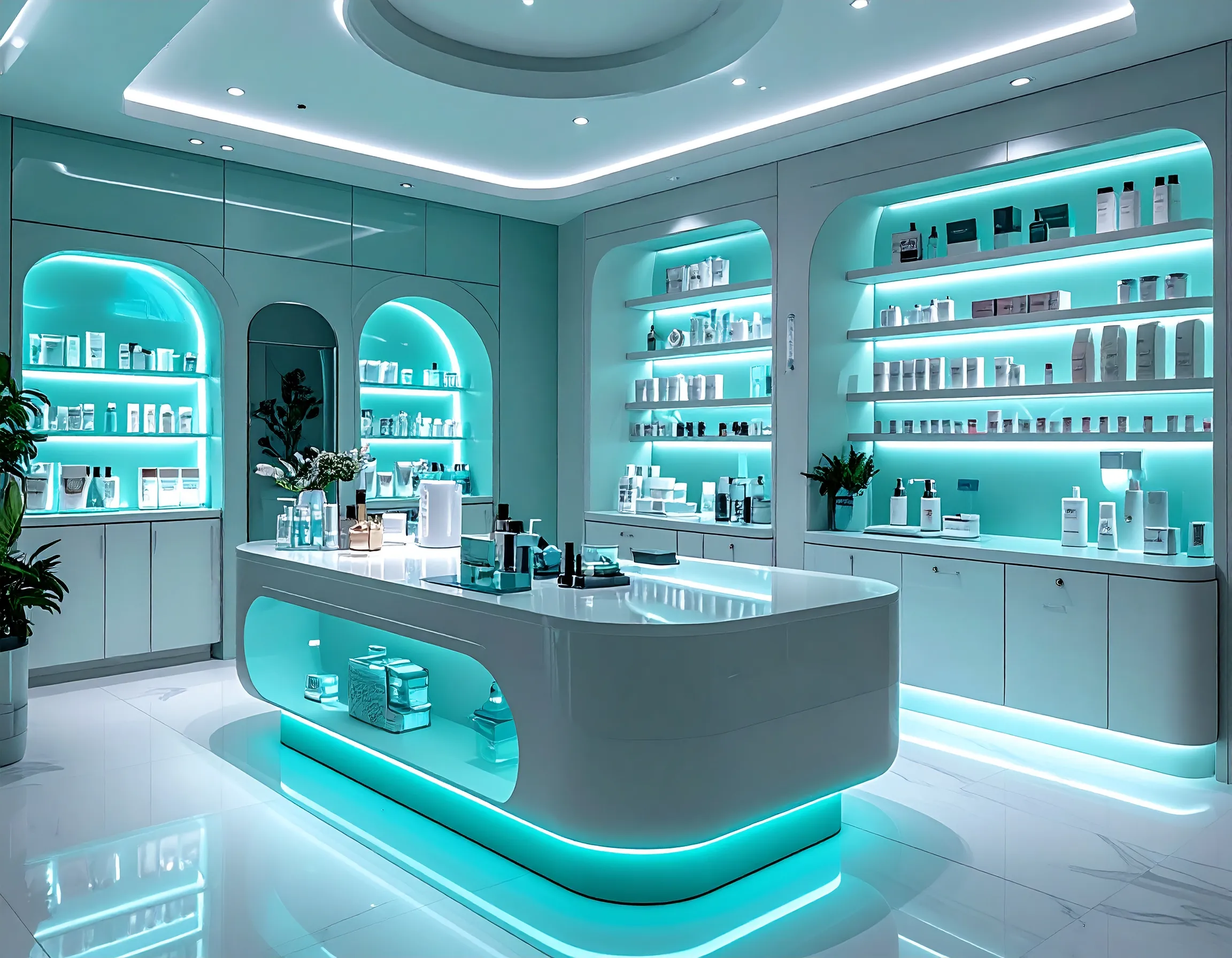
The rise of AI in the beauty industry
The global AI beauty market, valued at $2.68 billion in 2022, is experiencing remarkable expansion with a projected compound annual growth rate of 14.4%. By 2027, this market is expected to reach approximately $6.80 billion, signaling a profound shift in how consumers interact with beauty products and services. This technological evolution is reshaping everything from product development to consumer experiences, creating a landscape vastly different from just a few years ago.
How AI is changing beauty consumer trends
Artificial intelligence is fundamentally altering consumer behavior in the beauty industry by enabling unprecedented levels of personalization. Today’s beauty shoppers increasingly expect tailored recommendations that consider their unique skin type, concerns, and preferences. According to industry research, implementing AI-driven personalization can improve conversion rates by up to 40%, making it a critical focus for forward-thinking brands.
Virtual try-on technologies have gained substantial traction, especially following the COVID-19 pandemic when in-store testing became challenging. These AI-powered tools use facial recognition and augmented reality to provide realistic product previews, enhancing the shopping experience while promoting both hygiene and sustainability. Notably, major brands like L’Oréal and Sephora have embraced these technologies to bridge the gap between online shopping and the traditional in-store experience.
Consumer priorities are also evolving significantly. Rather than being influenced primarily by brand founders or demographic-focused marketing, today’s beauty consumers prioritize:
- Product quality and efficacy above all else
- Shared esthetic perspectives
- Personalized solutions backed by data
- Sustainable and transparent practices
As a result, beauty companies that once built their brand identity around specific founders or demographic groups are finding these strategies insufficient for driving long-term growth. At the same time, new AI-powered tools are helping consumers make more informed decisions about ingredient safety and product effectiveness, responding to growing demands for transparency.
Why 2025 is a turning point for beauty and tech
The year 2025 represents a critical inflection point in the convergence of beauty and technology. By this time, online channels are expected to account for nearly one-third of global beauty sales, up from 26% in 2024. This shift coincides with significant advancements in AI capabilities that are transforming not just marketing but the entire product lifecycle.
At CES 2025, agentic AI (artificial intelligence capable of independent action and learning) made a strong impression on industry executives with its potential to reshape everything from robotic beauty treatments to automated marketing analysis. This technology enables beauty brands to deliver increasingly sophisticated experiences, from AI-powered skincare robots promising personalized treatments in just three minutes to 20-minute gel manicures from salon robots—a fraction of the traditional time.
Beauty professionals who recognize and embrace these AI advancements will be better positioned to adapt to changing consumer expectations, streamline operations, and identify emerging opportunities in a highly competitive market. Nevertheless, adoption remains uneven—only 10% of executives surveyed report using AI regularly, while 60% are still in an exploratory phase.
Looking ahead, the distinction between AI leaders and laggards in the beauty industry will likely widen significantly. As one McKinsey report notes, “The fast will become faster, more responsive, and better equipped to anticipate and deliver what consumers want, while those left behind may find it harder to hold on to slivers of market share”. Essentially, 2025 marks the point where AI integration transitions from being a competitive advantage to a fundamental necessity for survival in the evolving beauty landscape.
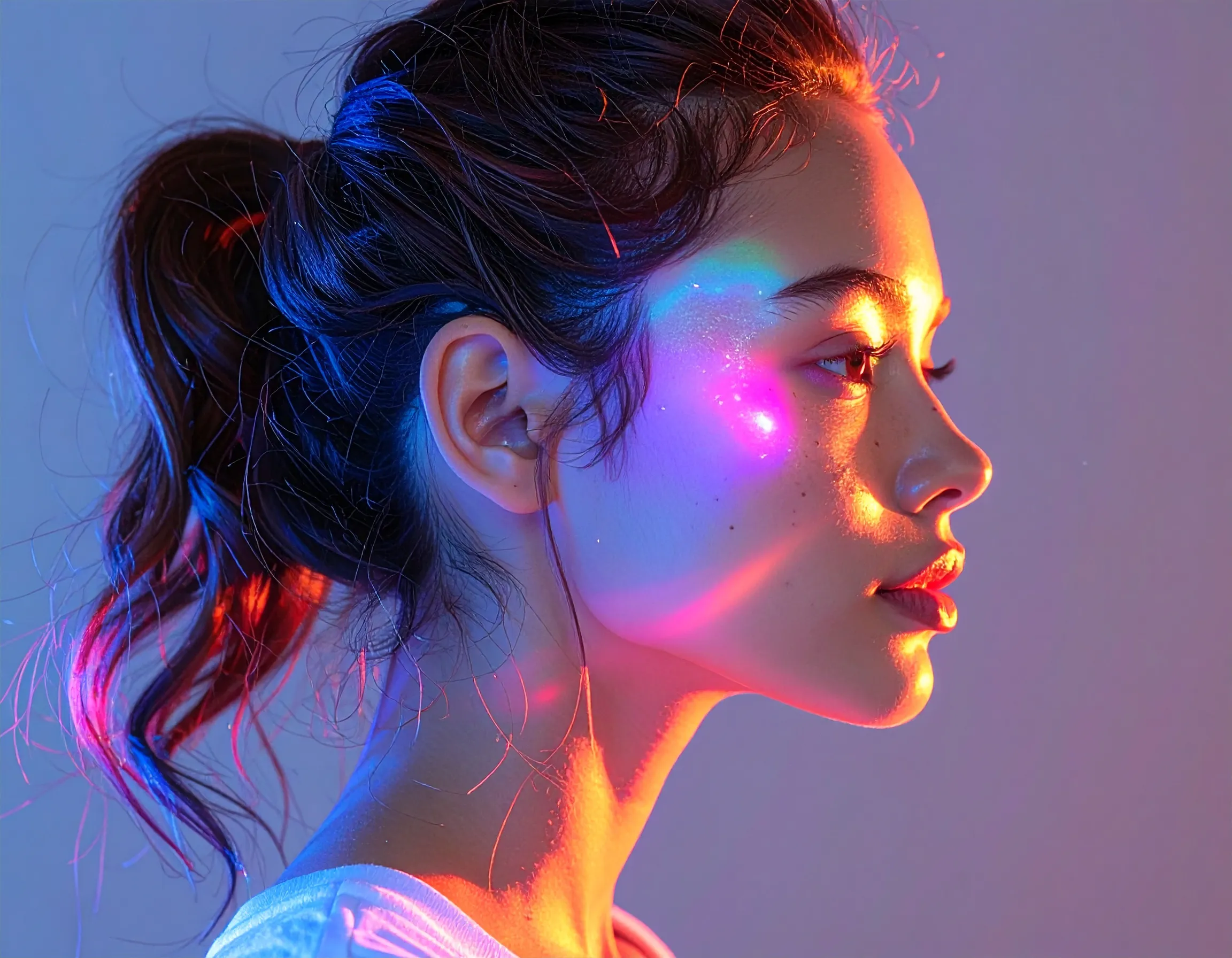
What expert makeup artists won’t reveal about AI tools
Behind the glamorous facade of professional makeup artistry lies a world of AI-powered tools that most experts keep under wraps. Despite their public emphasis on traditional skills, many makeup professionals are quietly embracing beauty AI technologies to enhance their work while maintaining the illusion of purely human creativity.
AI-generated makeup looks vs. human artistry
Professional makeup artists are increasingly using AI to generate concept looks, though few openly admit this practice. The relationship between human artistry and AI assistance has become complex—many artists use AI tools for inspiration but present the final work as entirely their own. This blurred line raises fascinating questions about creativity and authenticity in the beauty space.
The distinction between AI-assisted and purely human makeup artistry is becoming increasingly subtle:
- AI excels at generating mathematically precise symmetry and color harmony
- Human artists bring nuanced understanding of skin texture and product behavior
- AI can instantly generate countless variations of a single look
- Human touch adds the emotional intelligence and adaptability that clients value
Many leading makeup artists privately admit that AI serves as their digital sketchpad, allowing them to visualize concepts before touching a client’s face. Yet publicly, they emphasize their years of training and artistic vision—creating a professional paradox that few discuss openly.
The hidden role of AI in influencer content
Social media makeup influencers present perhaps the most significant disconnect between public persona and behind-the-scenes reality. Many influencers who appear to showcase purely manual techniques are actually augmenting their content with AI tools.
Several industry insiders confirm that leading beauty influencers regularly employ AI-enhanced editing beyond simple filters—utilizing sophisticated facial recognition algorithms to perfect symmetry, enhance colors, and even modify facial features post-production. Consequently, the “flawless” results viewers attempt to recreate are often technically unachievable through products and manual application alone.
Furthermore, content scheduling and engagement strategies increasingly rely on AI analysis to determine optimal posting times and content types. Even though influencers project spontaneity and authenticity, many leverage predictive AI to maximize visibility and engagement.
How artists use AI to test beauty trends before launch
Perhaps most surprising is how makeup artists utilize AI for trend testing long before introducing new looks to the public. Professional artists often create digital versions of potential makeup trends, testing consumer reception through limited AI releases before investing time in developing physical techniques and product recommendations.
This approach allows artists to:
First, generate multiple trend concepts rapidly through AI visualization Second, test market response with focus groups using virtual try-ons Third, refine techniques based on feedback before public launch
This trend-testing strategy has revolutionized the traditional beauty launch timeline. Previously, makeup artists would introduce new techniques through editorial spreads or runway shows, waiting months to gage public response. Now, AI allows for rapid iteration and market testing in days rather than seasons.
Additionally, many artists use AI-powered color analysis to predict seasonal trend palettes, often scanning thousands of fashion images to identify emerging color stories before developing complementary makeup looks. This data-driven approach remains largely undisclosed, as it contradicts the narrative of artistic intuition that many professionals prefer to project.
In essence, beauty AI has become the makeup artist’s secret weapon—enhancing creativity, improving precision, and enabling market testing while remaining largely invisible to the consumer’s eye.
4 AI use cases transforming beauty in 2025
In 2025, beauty AI applications are advancing beyond basic algorithms to deliver unprecedented value throughout the product lifecycle. McKinsey’s research identifies four use cases that are fundamentally reshaping the industry through enhanced personalization and efficiency.
Hyperpersonalized product recommendations
AI-driven beauty recommendations have evolved from simple questionnaires to sophisticated analysis systems. L’Oréal’s Beauty Genius combines decades of beauty expertise with cutting-edge AI technologies to provide personalized routines and recommendations from over 750 products. Moreover, Unilever’s BeautyHub PRO utilizes Computer Vision to assess up to 30 visual data points from a selfie, generating tailored product suggestions across multiple brands. The business impact is substantial—consumers who discover products through BeautyHub PRO are 43% more likely to complete a purchase and have 39% higher shopping basket values.
AI-powered virtual try-ons and skin analysis
Virtual try-on technology has matured into a powerful shopping tool that merges augmented reality with artificial intelligence. L’Oréal’s virtual makeup simulator detects 63 key facial landmarks to superimpose lifelike computer-generated makeup onto selfies or live images. Meanwhile, Perfect Corp’s Live Skin Analysis can identify up to 15 skin concerns including spots, wrinkles, and redness in real-time. These technologies generate immediate results—one medical spa implementing AI skin analysis reported a 31% increase in recurring visits and a 47% rise in average client spending.
Rapid concept testing for packaging and branding
Development cycles for beauty packaging and branding concepts have been dramatically compressed through AI. Specifically, designers can now prompt AI platforms to generate multiple packaging options based on parameters like product type, benefits, and sustainability requirements. This approach has reduced concept development time by 60% for some companies, allowing brands to test market reception before committing to production.
AI-assisted product formulation and testing
Perhaps the most transformative application is in product creation itself. AI models trained on a beauty product’s bill of materials, raw material usage, and process parameters can identify optimal ingredients for new products and predict formulation benefits. This capability is particularly valuable for creating skincare formulations—traditionally a multiyear process. Indeed, McKinsey analysis shows that AI tools can reduce research time from weeks to days while potentially saving up to 5% on raw materials costs during development.
Ultimately, these four applications represent not just incremental improvements but fundamental shifts in how beauty products are conceived, created, and marketed in 2025.
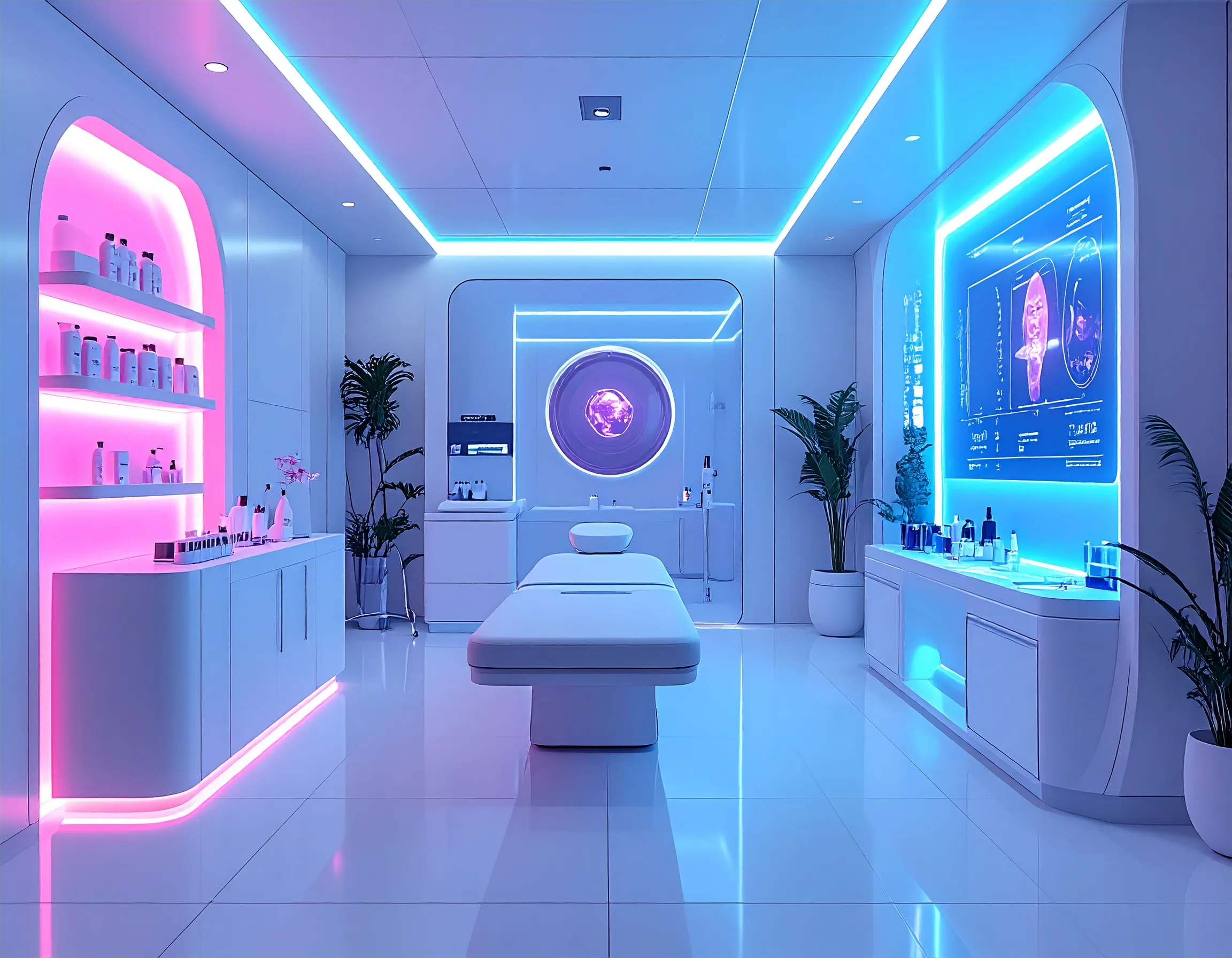
Behind the scenes: How brands implement beauty AI
Most major beauty brands in 2025 aren’t creating their AI technologies from scratch—instead, they’re making strategic decisions about how to adopt and integrate existing solutions. Understanding these implementation approaches provides a window into the real-world application of beauty AI.
The taker vs. shaper approach explained
Beauty companies typically choose between two primary AI implementation strategies. The “taker approach” involves integrating ready-made AI solutions with minimal customization. This method proves most cost-effective for smaller brands with limited consumer data or technical resources. Brands using this strategy primarily leverage public AI services through APIs or chat interfaces.
Alternatively, the “shaper approach” involves customizing third-party AI platforms with proprietary data. For instance, many established beauty brands train models using their demographic data, brand voice, and past campaign results to enhance personalized targeting. This resource-intensive approach suits larger players with extensive data and technical expertise.
Why most brands don’t build their own AI
Although a third option exists—the “maker approach” where companies build proprietary AI models from scratch—this path remains rarely feasible for beauty companies. The substantial capital expenditures and specialized talent requirements often exceed what most beauty brands can justify.
Furthermore, developing in-house AI systems could potentially dilute a beauty player’s focus on its core competencies. Given that beauty is as much science as art, maintaining human oversight remains critical even with automation.
As a practical solution, many companies adopt a hybrid strategy combining taker and shaper approaches, which frequently delivers superior results. This modular approach to AI components allows for easier scaling and switching between providers as needs evolve.
How AI integrates with digital asset systems
For effective implementation, beauty brands must integrate their AI models with digital-asset-management (DAM) systems that serve as repositories for all creative assets. These systems have become increasingly vital as organizations generate unprecedented volumes of digital content to satisfy customer demand.
AI enhances these DAM systems by automating traditionally manual tasks—such as categorizing creative assets—which frees marketing teams to focus on higher-value activities. Additionally, AI-powered tools simplify maintaining brand consistency by automatically detecting off-brand elements like incorrect logos or mismatched colors.
Overall, proper AI integration ultimately enables smoother collaboration across the entire content lifecycle, transforming how beauty brands operate behind the scenes.
Risks and realities of AI in beauty
“I always say that beauty is a byproduct. I think if we really do this work, and we get this work right, I think that it is the emotion that people feel that moves them: It’s beyond beauty, beyond what you see with your eye. It is what you feel.” — Ray Booth, Renowned interior designer and thought leader on esthetics
Beneath the dazzling potential of beauty AI lie crucial challenges that brands and consumers must address. These issues go beyond technical limitations to fundamental questions about fairness, privacy, and human expertise.
Bias in AI beauty test results
The darker side of beauty AI emerged clearly in 2016 when the Beauty.AI contest revealed a striking bias—almost all winners had white skin. This wasn’t coincidental; training data for beauty AI predominantly follows Western beauty standards, creating systems that perpetuate narrow beauty ideals. Research shows error rates as high as 34.7% for darker-skinned females versus just 0.8% for lighter-skinned males. Even clinical testing reflects this imbalance, with merely 4% of participants having brown or black skin.
Data privacy and consumer trust
Consumer trust remains a significant hurdle for beauty AI adoption. These technologies require sensitive biometric information for personalized recommendations, raising serious privacy questions. Companies failing to safeguard customer data risk not only legal penalties yet additionally considerable reputational damage. As a result, brands must prioritize transparency—clearly explaining how user data will be processed and stored—to maintain customer confidence.
Why human oversight is still essential
Beauty AI systems generally lack transparency, operating as “black boxes” that obscure their decision-making processes. Current algorithms can exhibit “hallucination,” generating incorrect or misleading information without proper supervision. AI lacks contextual awareness and nuanced understanding, therefore human expertise continues to be vital in refining algorithms, identifying potential biases, and ensuring recommendations remain relevant to real-world applications.
Conclusion
Beauty AI stands at a fascinating crossroads as we approach 2025. Despite its projected growth to nearly $80 billion, many aspects remain shrouded in secrecy among industry professionals. Behind the scenes, makeup artists quietly leverage AI tools while publicly emphasizing their artistic skills and techniques. This duality creates an interesting paradox where technology enables creativity yet remains deliberately hidden from consumer view.
AI has undoubtedly transformed how beauty professionals work. Previously, trend testing took months through editorial spreads or runway shows. Now, artists can generate and refine concepts within days using AI visualization tools. Similarly, beauty brands must choose their implementation approach wisely—whether adopting ready-made solutions or customizing platforms with proprietary data.
The four key applications we’ve explored showcase why 2025 marks a critical turning point. Hyperpersonalized recommendations, virtual try-ons, rapid concept testing, and AI-assisted formulation aren’t just incremental improvements but fundamental shifts in how beauty products come to life. Brands that fail to adapt risk falling behind competitors who embrace these technologies.
Nevertheless, significant challenges persist. AI systems trained on limited datasets perpetuate narrow beauty standards and show alarming bias against darker skin tones. Additionally, privacy concerns loom large as these technologies require sensitive biometric information from consumers.
Human expertise therefore remains essential. Though AI excels at generating precision and efficiency, it lacks the contextual awareness and emotional intelligence that skilled makeup artists bring to their craft. The future belongs neither to pure AI nor traditional methods alone but rather to thoughtful integration that maximizes strengths while minimizing weaknesses.
Beauty AI thus represents both tremendous opportunity and responsibility. Brands that acknowledge its limitations while harnessing its capabilities will likely emerge as industry leaders. Ultimately, the goal should extend beyond mere efficiency—beauty technologies should expand possibilities, foster inclusion, and enhance self-expression for everyone.
Key Takeaways
The beauty AI revolution is happening behind closed doors, with professionals quietly leveraging technology while maintaining traditional facades. Here’s what industry insiders don’t want you to know:
- Professional makeup artists secretly use AI for concept generation and trend testing, despite publicly emphasizing purely human artistry and traditional skills.
- Beauty AI market will reach $80 billion by 2025, driven by hyperpersonalized recommendations that can boost conversion rates by up to 40%.
- Most brands adopt existing AI solutions rather than building their own, choosing between “taker” and “shaper” approaches based on resources and data availability.
- AI bias remains a critical problem, with error rates as high as 34.7% for darker-skinned individuals versus just 0.8% for lighter-skinned males.
- Human oversight is still essential because AI systems operate as “black boxes” and lack the contextual awareness needed for nuanced beauty decisions.
The future of beauty lies not in choosing between AI and human expertise, but in thoughtful integration that maximizes technological capabilities while preserving the emotional intelligence and cultural sensitivity that only humans can provide.
FAQs
Q1. How is AI changing the beauty industry in 2025? AI is revolutionizing the beauty industry by enabling hyperpersonalized product recommendations, virtual try-ons, rapid concept testing, and AI-assisted product formulation. These advancements are improving conversion rates, streamlining product development, and enhancing the overall consumer experience.
Q2. Are makeup artists really using AI in their work? Yes, many professional makeup artists are quietly incorporating AI tools into their work. They use AI for concept generation, trend testing, and even to perfect symmetry and color harmony in their looks. However, most artists don’t openly discuss this practice to maintain the perception of purely human artistry.
Q3. How are beauty brands implementing AI technologies? Most beauty brands are adopting existing AI solutions rather than building their own. They typically choose between a “taker approach” (using ready-made solutions) or a “shaper approach” (customizing third-party platforms with proprietary data). Many opt for a hybrid strategy combining both approaches for optimal results.
Q4. What are the risks associated with beauty AI? Key risks include bias in AI beauty test results, particularly for individuals with darker skin tones, and concerns about data privacy and consumer trust. Additionally, AI systems can sometimes generate incorrect or misleading information without proper human oversight.
Q5. Will AI completely replace human expertise in the beauty industry? No, human expertise remains essential in the beauty industry. While AI excels at tasks like generating precision and efficiency, it lacks the contextual awareness, emotional intelligence, and nuanced understanding that skilled makeup artists and beauty professionals bring to their craft. The future of beauty lies in thoughtful integration of AI and human expertise.

